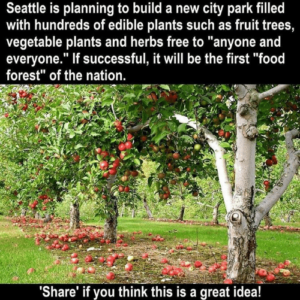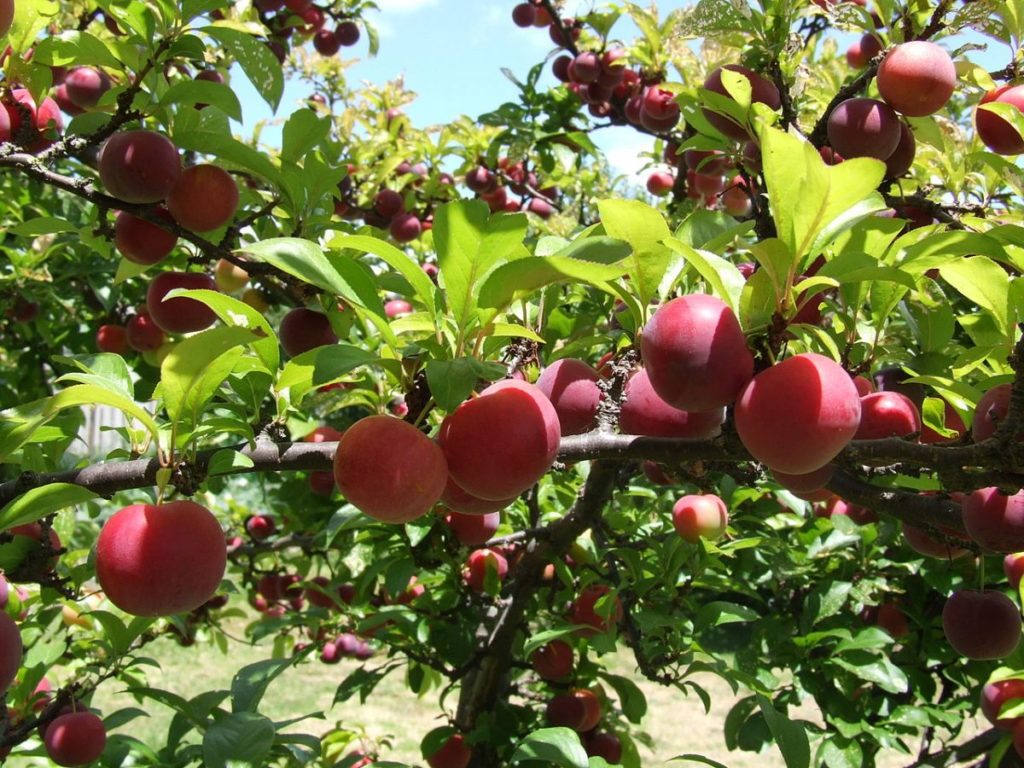Urban Food Forests
I’m very excited to have attended the first planning meeting for the Brown’s Mill Food Forest, which is going to be the country’s largest food forest just 3 miles from my house! There is a substantial amount of planning and planting to come, and lots of educational opportunities as well. I’m happy to have a great project to get involved with on a local level!
After reading an article about Atlanta’s newest food forest project, I immediately contacted the organizers and volunteered to help. I got to attend an organizational meeting on Saturday, January 21st, while many of my friends were marching in the rain at the Women’s March in cities all over the world.
What makes a Food Forest?
So what is a food forest, you ask? Here are my notes from presentations I heard, along with my observations.
A food forest is a gardening technique made up of layers of edible trees, shrubs and groundcovers. It contains perennial, diverse and multilayered landscaping. An established food forest can have up to 9 active layers including roots, herbs, ground cover, understory, shrubs, vines, and canopy. It should provide sustainable features for healthy cities, diverse and healthy foods, and good public space. The food forest should be flexible, have varied spaces, be well-connected (such as bike paths), and be centrally located. There is an emphasis on long-term sustainability through perennials, along with annual plantings such as spaces for community garden plots.

Beacon Hill Food Forest in Seattle was featured as a case study. You’ve probably seen the memes that Seattle is building a park where the food grows on tress and is free to everyone, this is that project. Beacon Food Forest started in 2010, and has grown into a beautiful space where the community can come together for classes, potlucks, and music jams.
Brown’s Mill Food Forest
The first organizational meeting was well-attended, with presentations from many experts. We heard from Melanie Bowerman, Master Landscaper from UGA; Rangers from The Parks Department; farmer Jamie Rosenthal from Shades of Green Permaculture that had developed his own small food forest (his presentation included the many edible plants that are native to this area that would be easy to grow and everyone in the room started drooling); and a representative from The Conservation Fund, Shannon Lee, who talked about their Parks with Purpose program.
Each had worked with food forests and park development at different levels, and were very positive about the prospects. There were a few neighbors who live right next to the property at the meeting as well, and they voiced several concerns over security. In the Parks Department activity, we were encouraged to write out Hopes, Concerns, and Expectations for the space. Security came up fairly often, so that will have to be addressed seriously when committees start to form.
I’m excited to get involved on an educational side, plus I can’t wait to harvest some locally grown produce! (The land was a family farm for many decades, so there are already some established fruit and pecan trees there.) I’m planning on attending the next meeting which is tentatively set for February 22nd (time and location is yet TBD). If you are interested, let me know and I’ll keep you in the loop as I get info on meeting times.
Resources
To find out more, check out:
Community Food Forests – Collaboratively growing & harvesting food in forest-like ecosystems
Beacon Food Forest in Seattle
The Conservation Fund’s Parks With Purpose Program
Shannon Lee – slee@conservationfund.org
Elizabeth Beak – ebeak@atlantaga.gov
